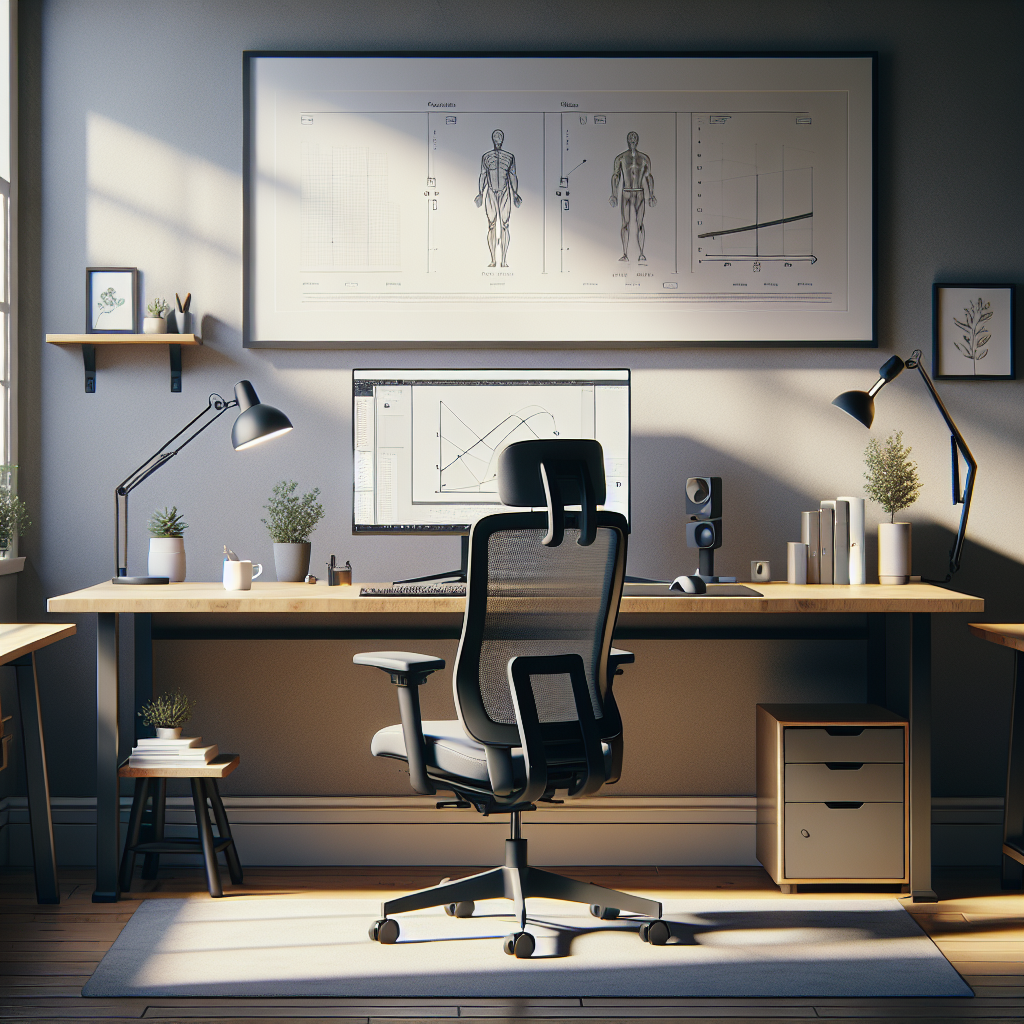Understanding Ergonomics
The concept of ergonomics revolves around designing environments that fit the user’s needs, improving efficiency and well-being. In the context of a home office, an ergonomic setup can drastically reduce the risk of physical problems that arise from prolonged periods of sitting and typing.
Choosing the Right Furniture
Desk
The desk is the centerpiece of your workspace. Opt for an adjustable desk that can shift between sitting and standing positions. This flexibility allows for movement throughout the day, reducing strain on the body.
Chair
An ergonomic chair is essential. Look for options with adjustable height, lumbar support, and armrests. The chair should support your lower back and promote a straight posture.
Optimizing Your Monitor Setup
Your monitor should be at eye level to avoid neck strain. Position the top of the screen at or slightly below your eye level, about an arm’s length away. If you are using a laptop, consider a laptop stand combined with an external keyboard and mouse.
Keyboard and Mouse Positioning
Place your keyboard and mouse close enough to avoid overstretching. Your forearms should be parallel to the ground, and your wrists should not be angled up or down.
Lighting Considerations
Proper lighting is crucial to reduce eye strain. Utilize natural light when possible, but avoid glare on your screens. Incorporate adjustable lighting options to control brightness according to the time of day and tasks at hand.
Organizing Your Space
A clutter-free workspace promotes better concentration and reduces stress. Use organizers, drawers, and shelves to store supplies. Ensure that frequently used items are within easy reach to minimize unnecessary movements.
Incorporating Accessories
Consider ergonomic accessories such as a footrest, document holder, or ergonomic mouse. These small additions can make a significant difference in your comfort level.
Taking Breaks and Moving Around
No matter how perfectly you set up your home office, staying in one position for too long is detrimental. Incorporate short breaks and stretches into your routine. Use apps or timers to remind yourself to move regularly.
Personalizing Your Space
Finally, make your workspace enjoyable. Add personal touches like plants, artwork, or photos. A pleasant environment can boost your mood and productivity.
By following these expert tips, you’ll create a home office that not only boosts productivity but also supports your physical well-being.

